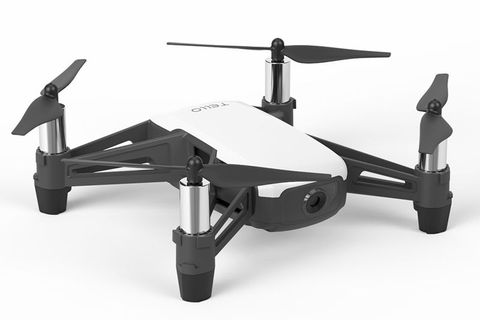The essence of what a drone can do is lend you perspective—that is, to see, video, and photograph the world from an entirely different angle. And this is only more true today because camera technology as well as avionics—loosely, what enables a drone to fly and a remote controller to remain in contact with that copter—have leaped forward at an astonishing rate.
Most of the best drones are supremely stable in a crosswind, unlikely to lose connectivity with a controller unless you fly them miles away, and—thanks to onboard GPS—will simply return to where they were launched and land themselves if that connection is broken. Range has also jumped. You can fly them on a path up to 15 miles away (though, there’s an important fine print item on that subject, below), and several that we’ve chosen shoot video in 4K and a few in even 8K resolution. Many feature the still-image quality of $1,000-plus DSLRs. And beyond all that, proximity-sensing tech buffers against many of the dangers of accidentally flying into trees and other objects that can cause crash landings. One thing that hasn’t changed: The more you spend, the more features, stability, flying time per charge and range you get.
Read on for our reviews of the best drones, plus advice on navigating the purchasing process.
What To Consider
For better or worse, there’s one company that stands pretty far apart from the others when it comes to consumer-level drones: DJI. And that’s true whether you’re shopping for something on the affordable side of things or a higher-end model. But rivals like Skydio and Autel are coming with their own cool offerings, too, so there are plenty of options.
The most important consideration when buying a personal drone is to choose the one that best fits your needs—ergo the one that you’re most likely to use. An expensive, high-end model could be great for pro-level video, but you might not get as much use out of it as a more affordable, portable drone that you can easily bring along on trips. On the flip side, you don’t want a drone that’s too limited in capabilities if you’re regularly making long flights or piloting it in more difficult conditions.
For most average users not looking to shoot professional-level video, that will mean a drone somewhere in the area of $400 to $1,500. Most have a flight time in the neighborhood of 30 minutes so you aren’t constantly worrying about your battery running dry, and they’re able to range at least a couple of miles (some many more). As you move up through that price (and beyond), you’ll get more advanced flight capabilities and better cameras. Pricier drones are often simply bigger, too, which can mean steadier flying in turbulence and the ability to carry bigger and better cameras.
Regulations
Even an inexpensive drone is a serious tool, not a toy, and you’ll want to make sure that you’re following all the local regulations when flying one. In the United States and Canada, that starts with registering your drone for a nominal fee if it’s above a certain weight (250 grams, or 8.8 ounces, in both countries). Other guidelines are also similar in both countries, and include things like:
- Always keeping your drone within your line of sight.
- Not flying near airports or other restricted areas, including near emergency response efforts.
- Not flying above 400 feet.
- Not flying over people or moving vehicles.
- Not operating your drone while you’re under the influence of drugs or alcohol.
There can be hefty fines for violating the rules, so you’ll want to familiarize yourself with them. You can find the full guidelines for the U.S. and Canada from the FAA and Transport Canada, respectively, and PCMag also has a good overview of the basics of drone flying.
How We Selected
To pick the best drones, we relied on our own previous knowledge and coverage. I got my first drone shortly after DJI released the Phantom 2, in 2014. Since then I’ve flown many models from a lot of brands that no longer exist, or that exist in other guises, such as 3-D Robotics. My first interest—and still my primary one—was in aerial photography. As an avid shooter who sometimes supports his freelance journalism with still and video, having a different view changed how I capture the world for professional work.
We also recruited a few pros to help with the selection process, since they spend thousands of hours a year flying and testing every drone they can get their hands on. “Knowing what’s coming next is really part of my job,” says Matt Sloane, CEO of Skyfire Consulting in Atlanta. Sloane began his company seven years ago to help firefighters and emergency ops use drones as tools to get more “eyes on the situation.” Sloane says most SWAT teams, for instance, would happily (and wisely) risk a drone rather than an officer, and Sloane himself not only has commercial drone licensing, he also has his commercial license to fly manned aircraft. We also tapped Billy Kyle’s knowledge. Kyle is founder of Atmos Aerial services outside Philadelphia, a professional surveying company that he says mostly entails flying delicately around construction sites, conducting aerial mapping for farmers, as well as for real estate firms. Kyle also reviews drones and offers quick guidance through instructional videos, and has about 100,000 followers on Youtube.
View full post here.





